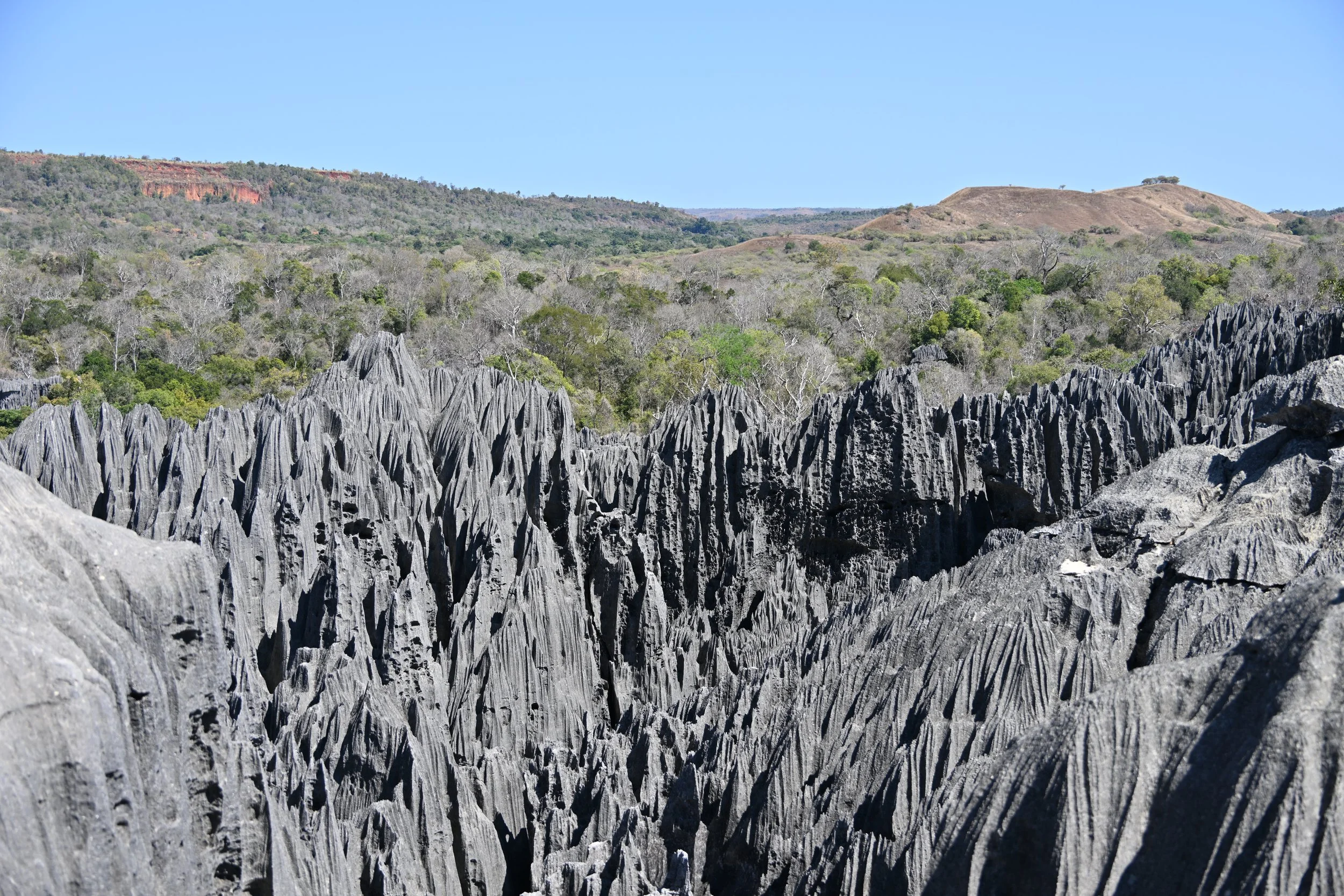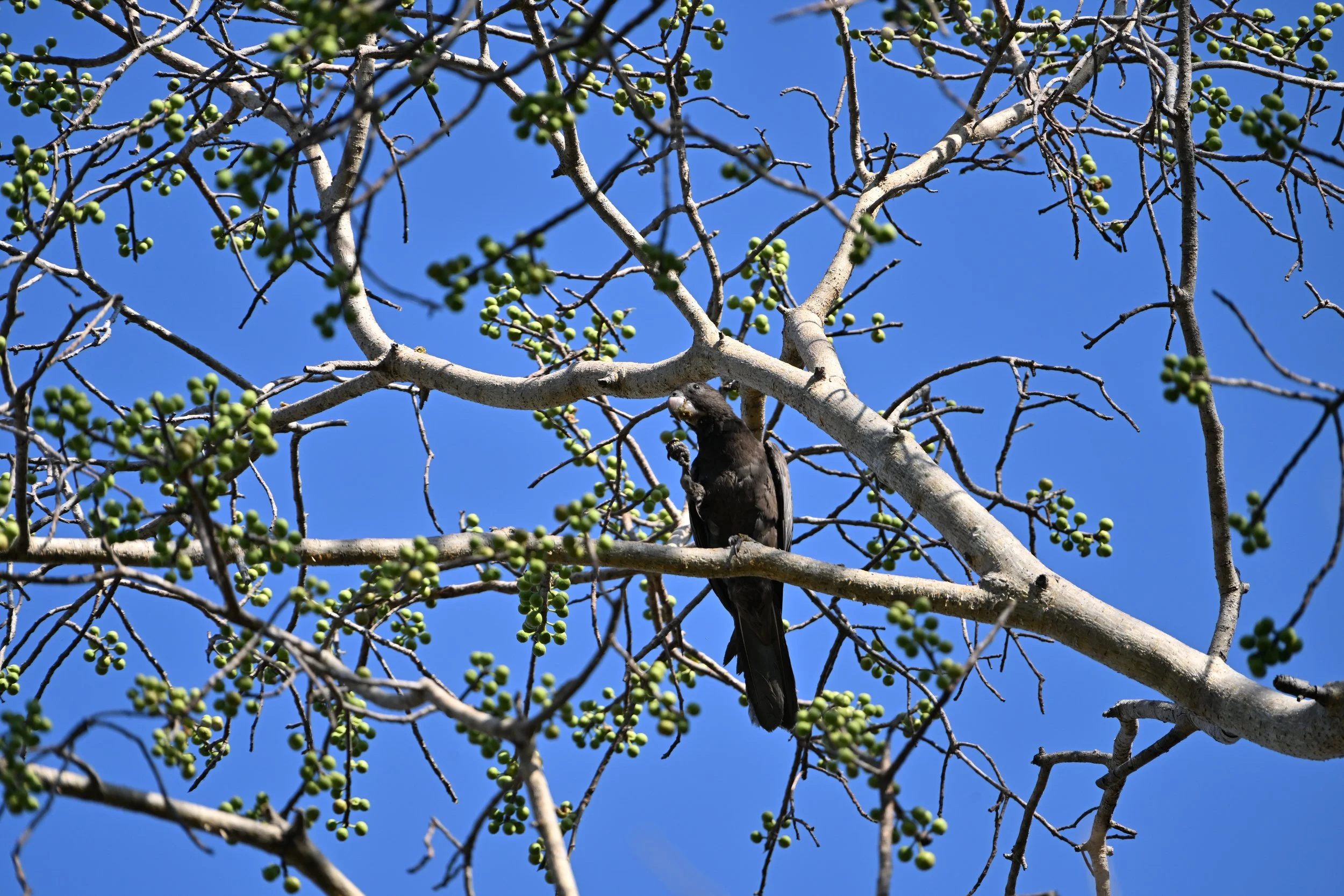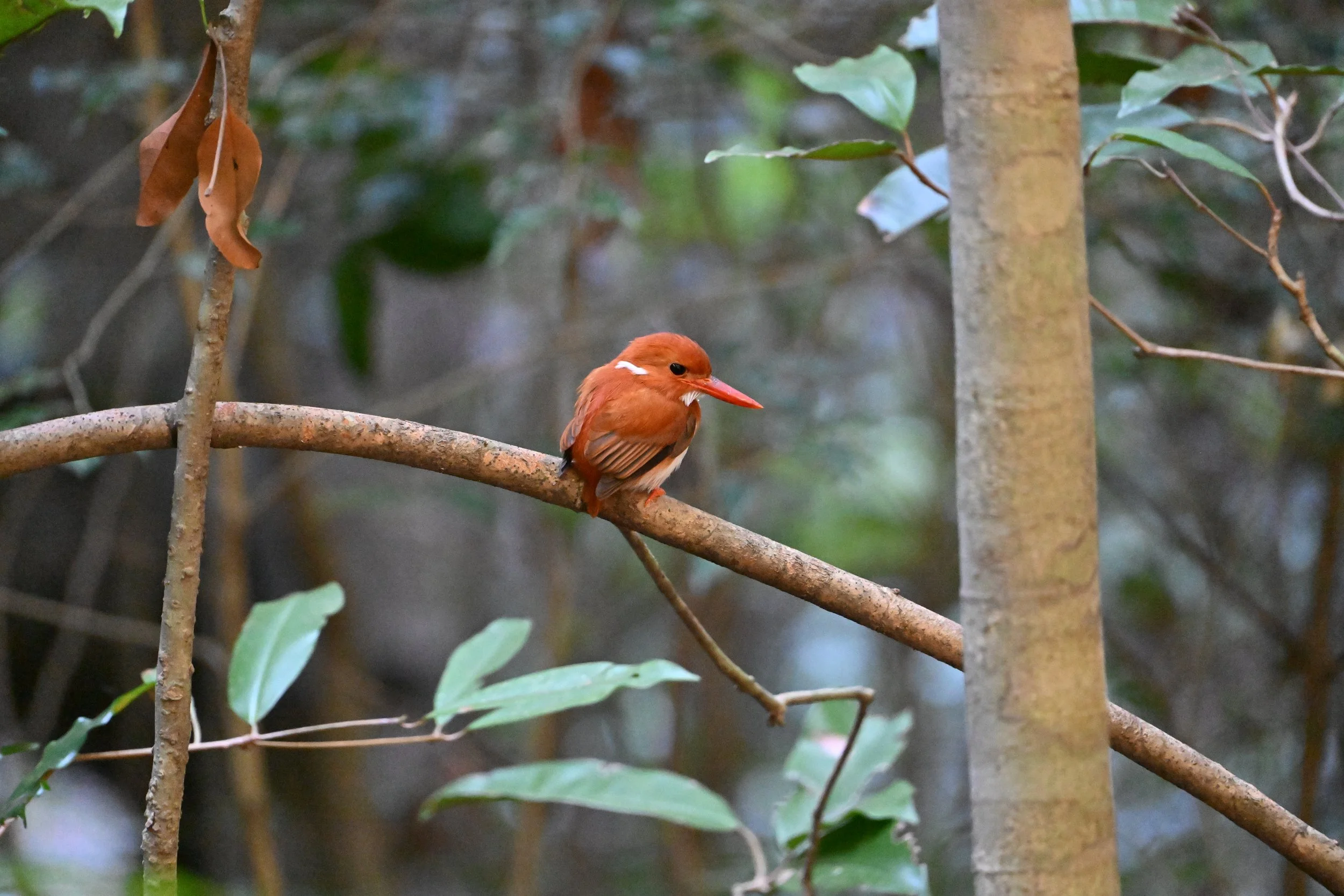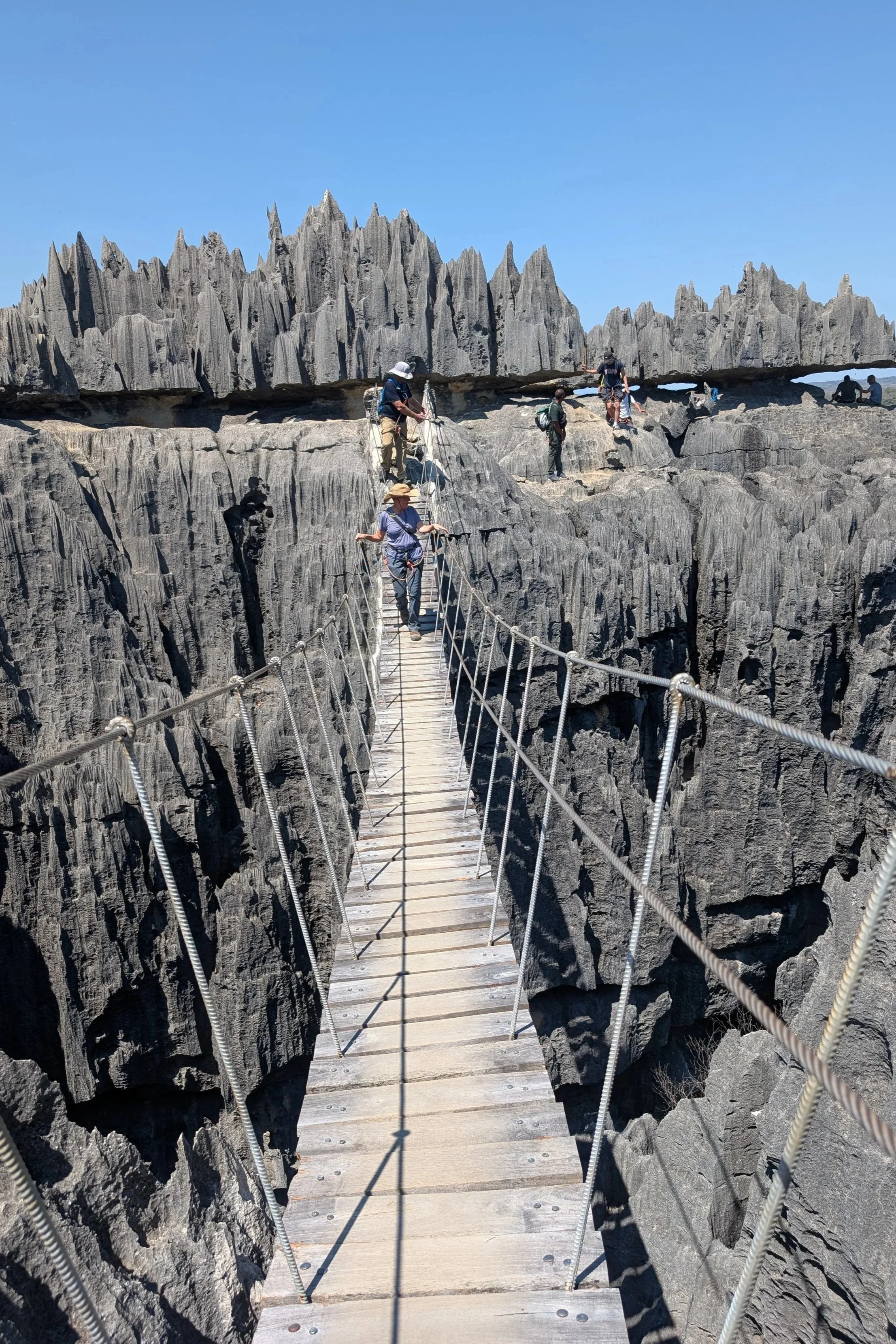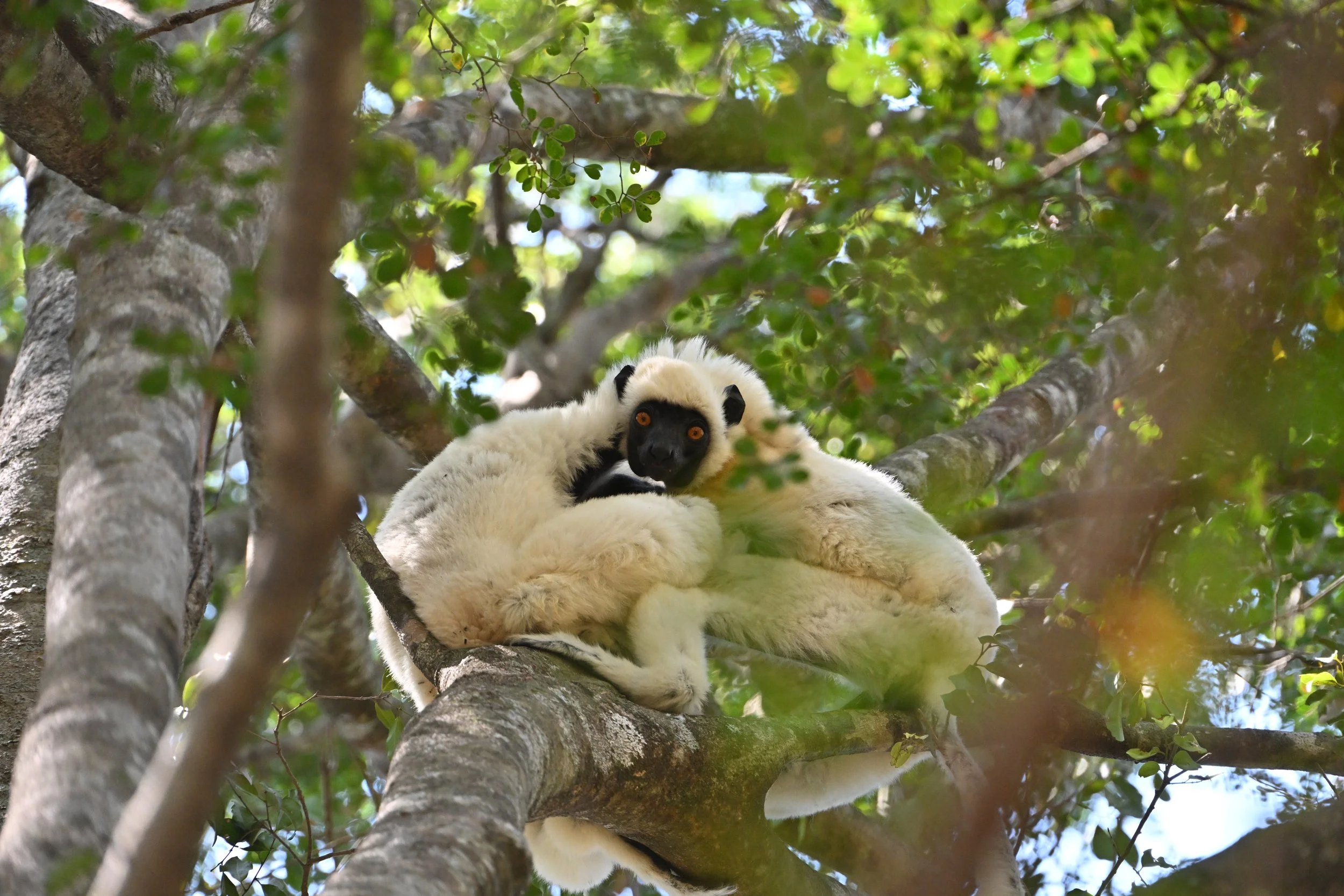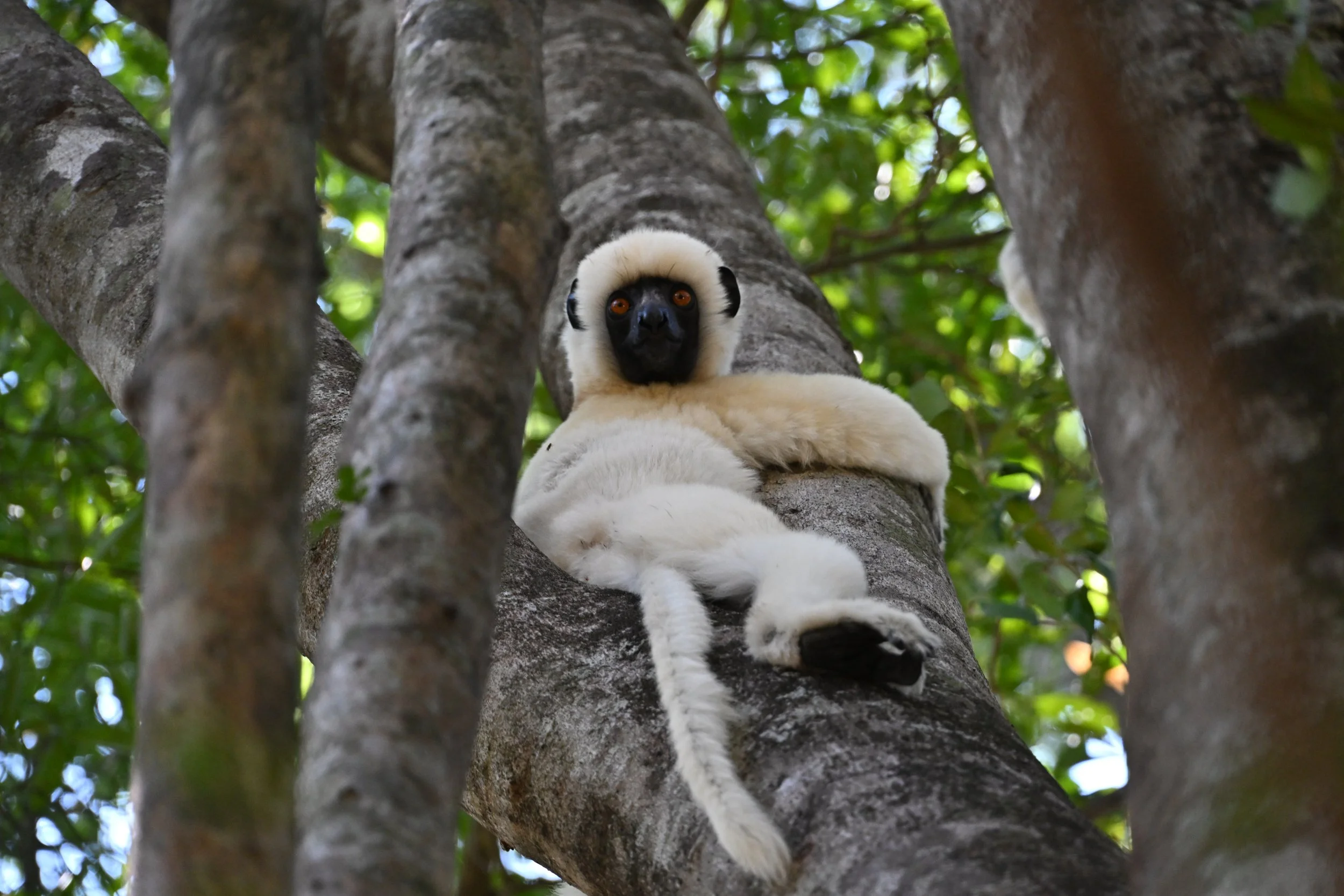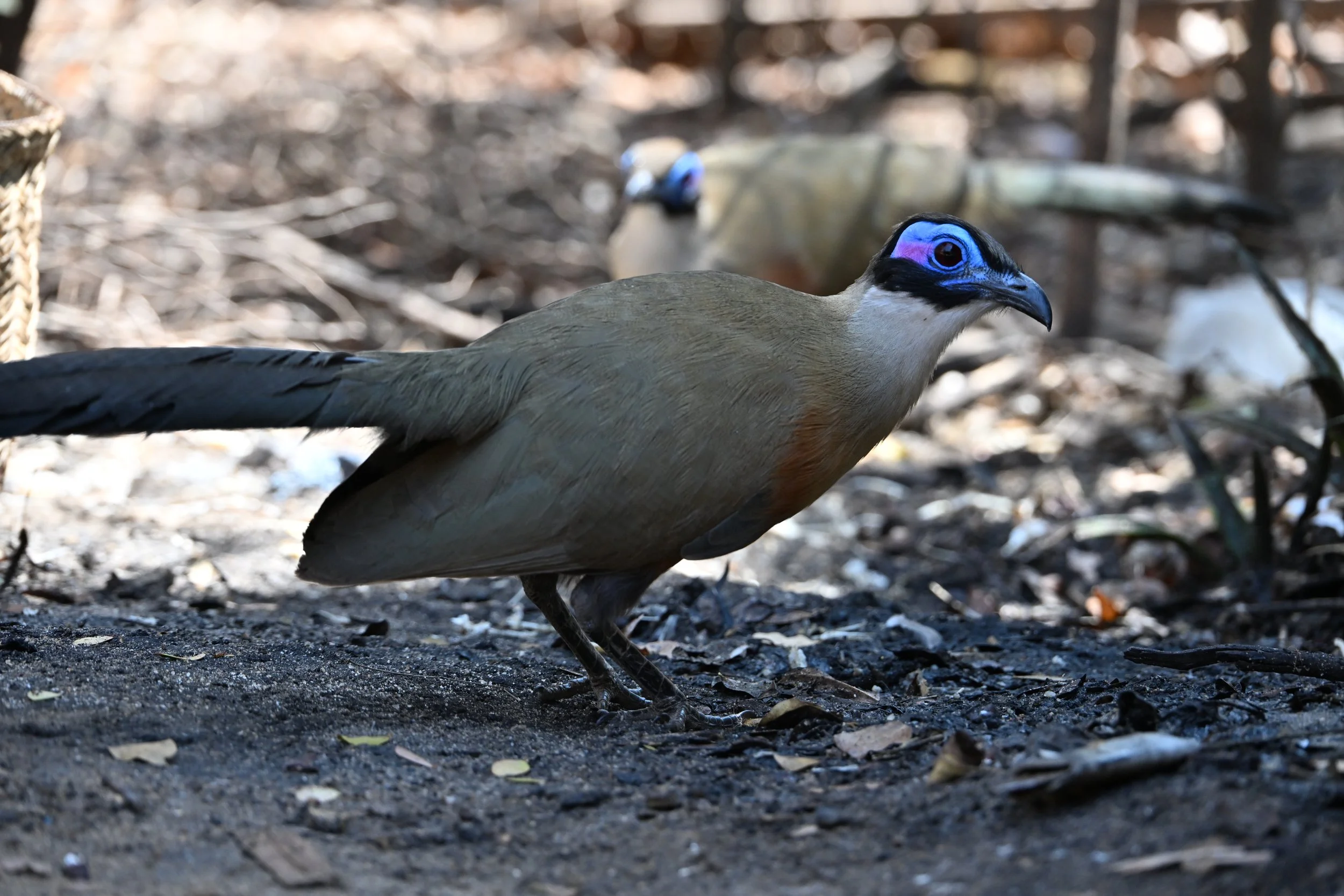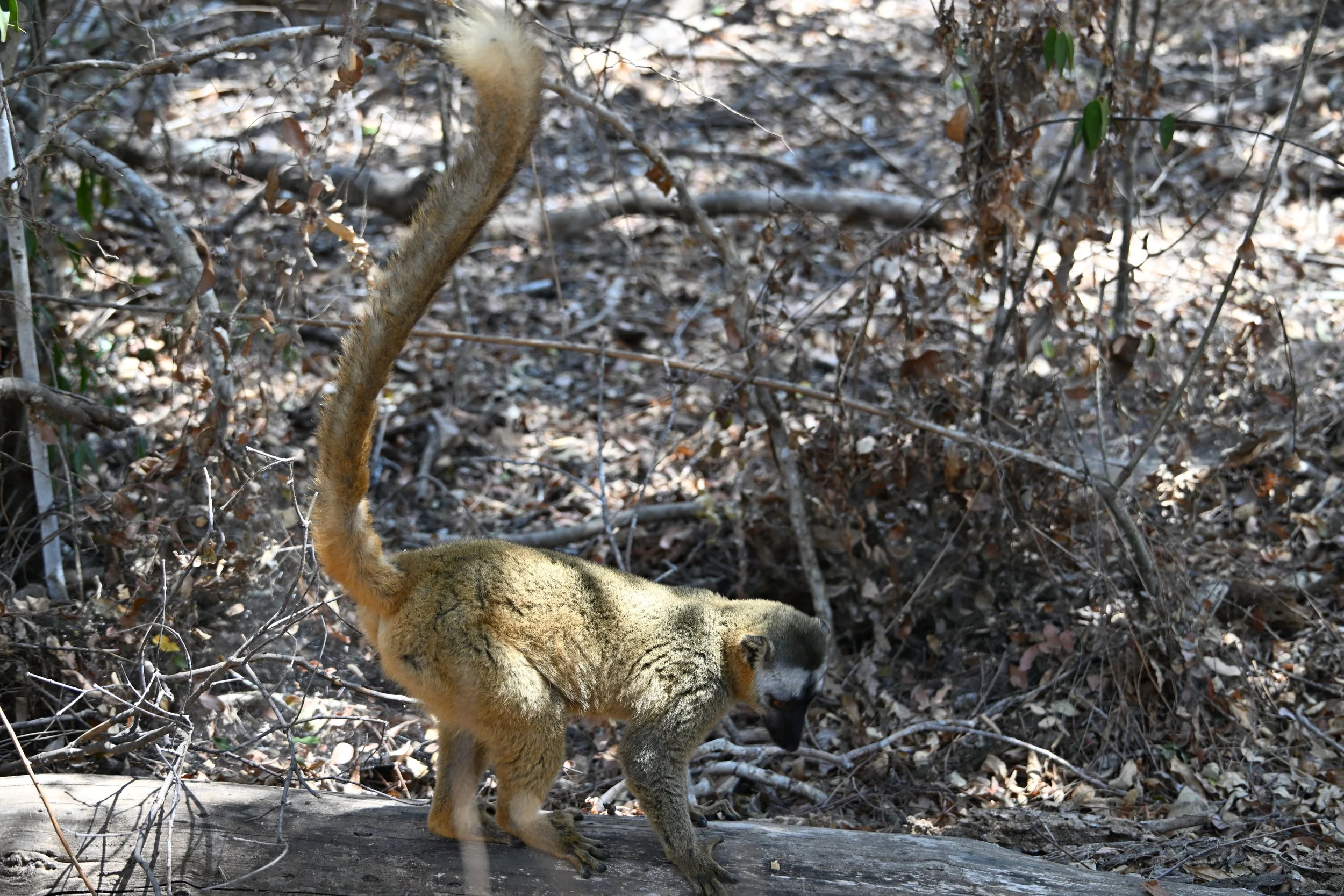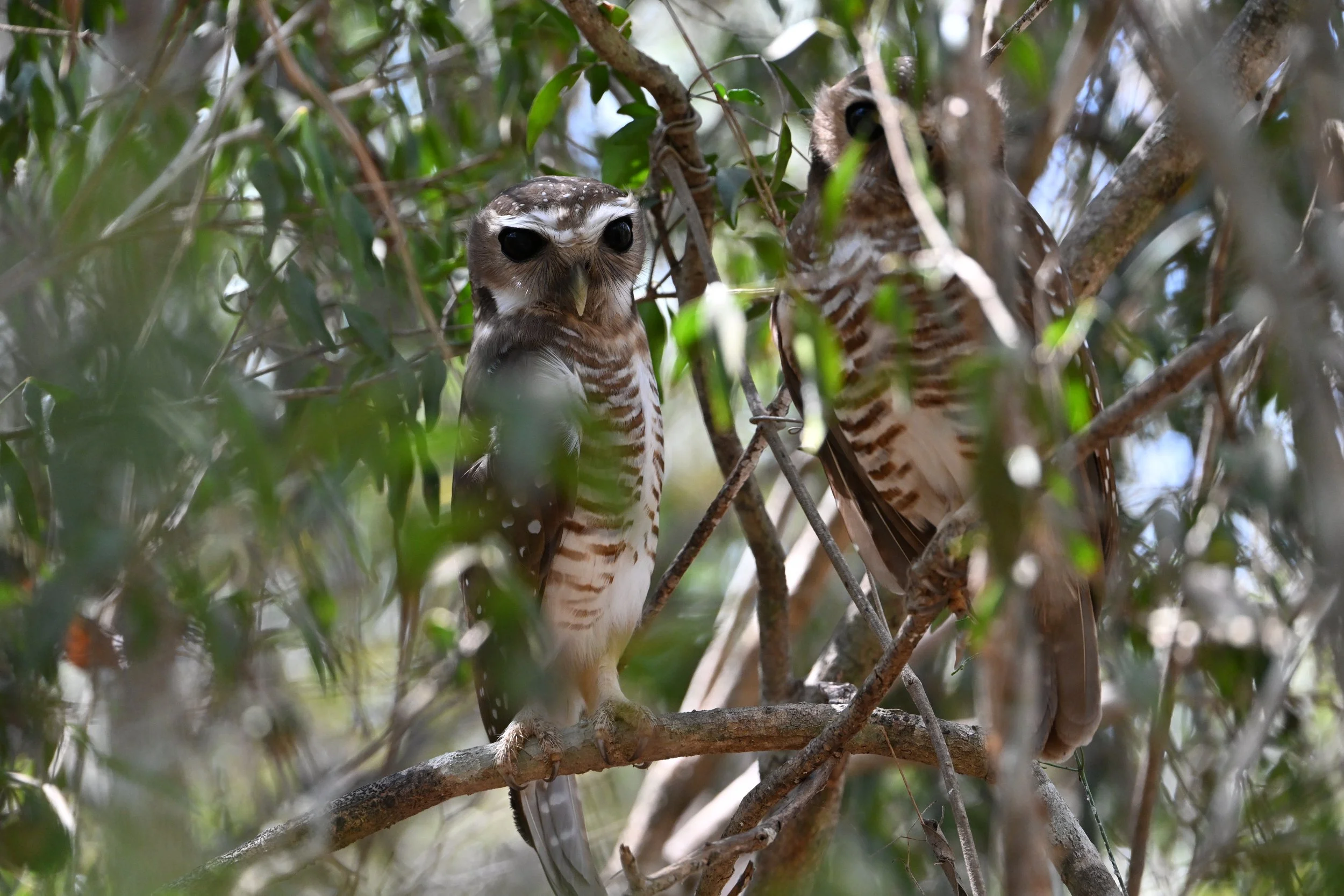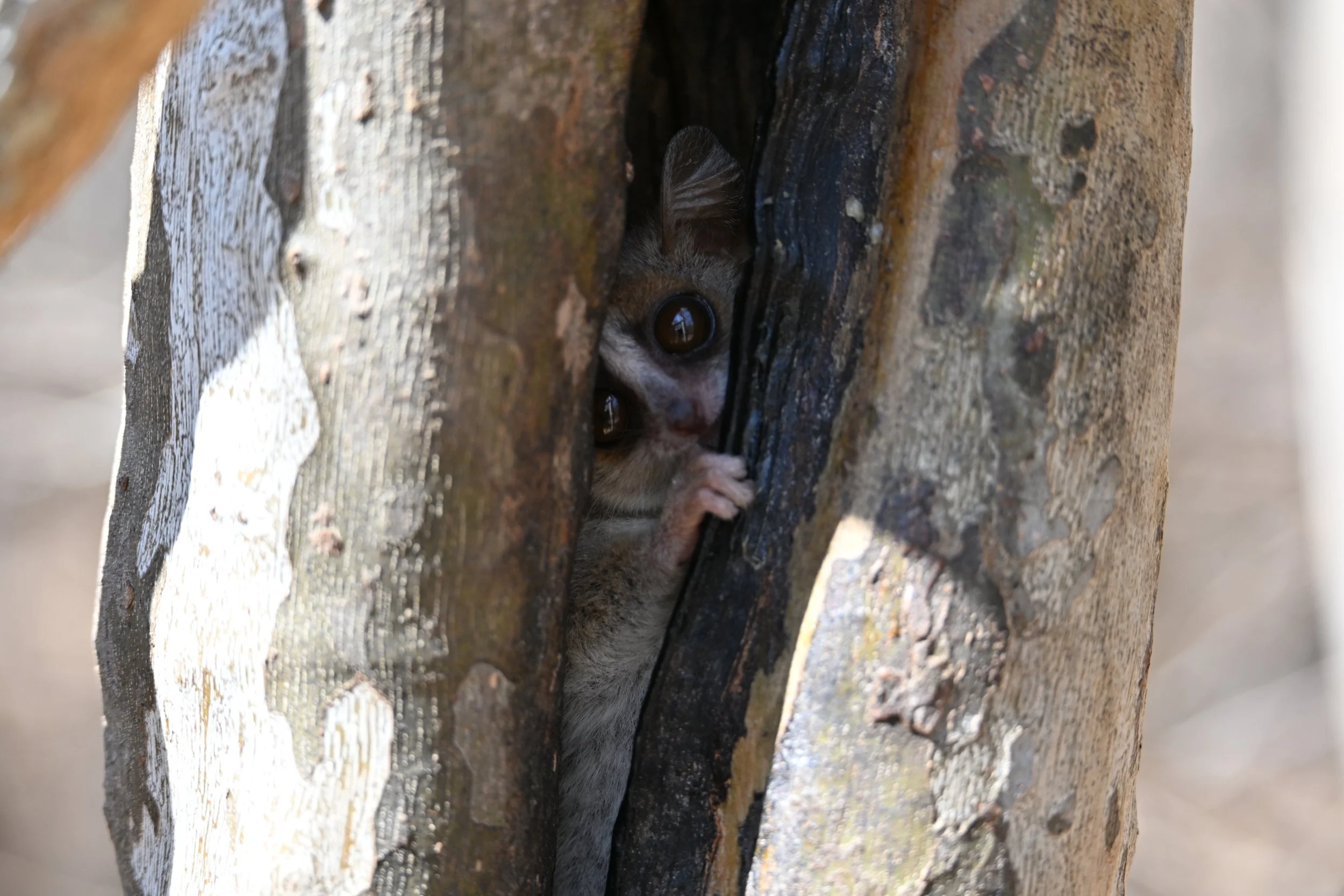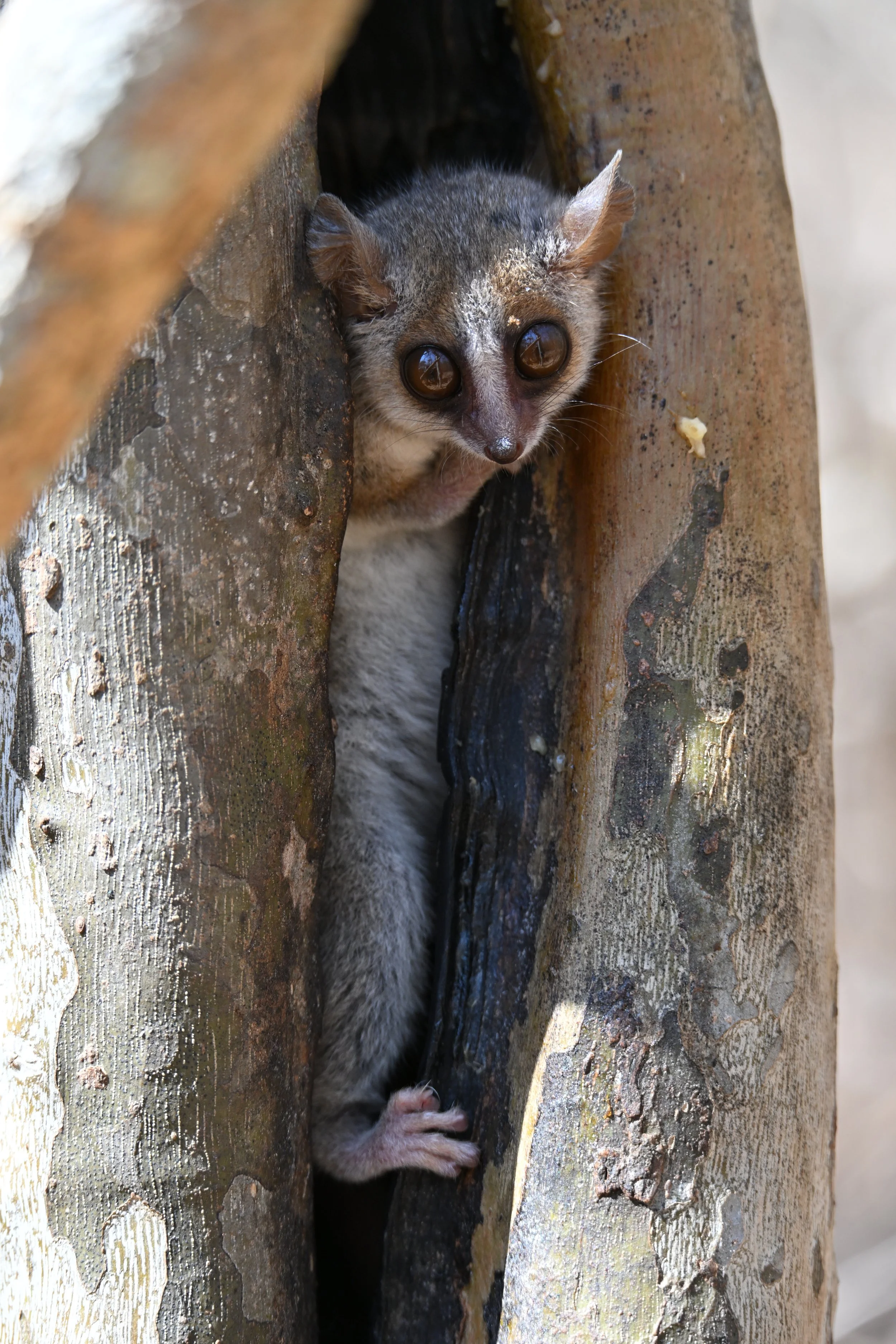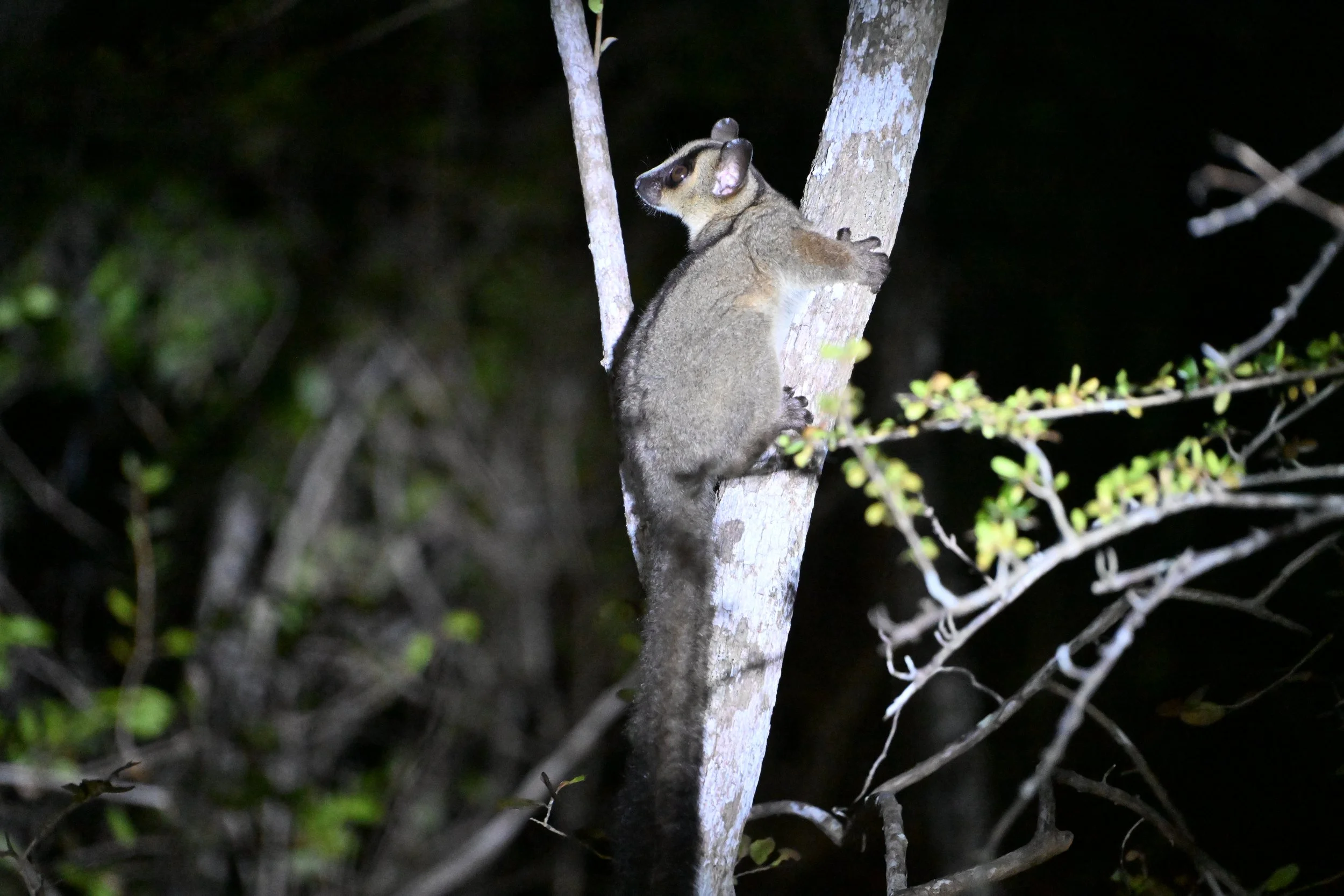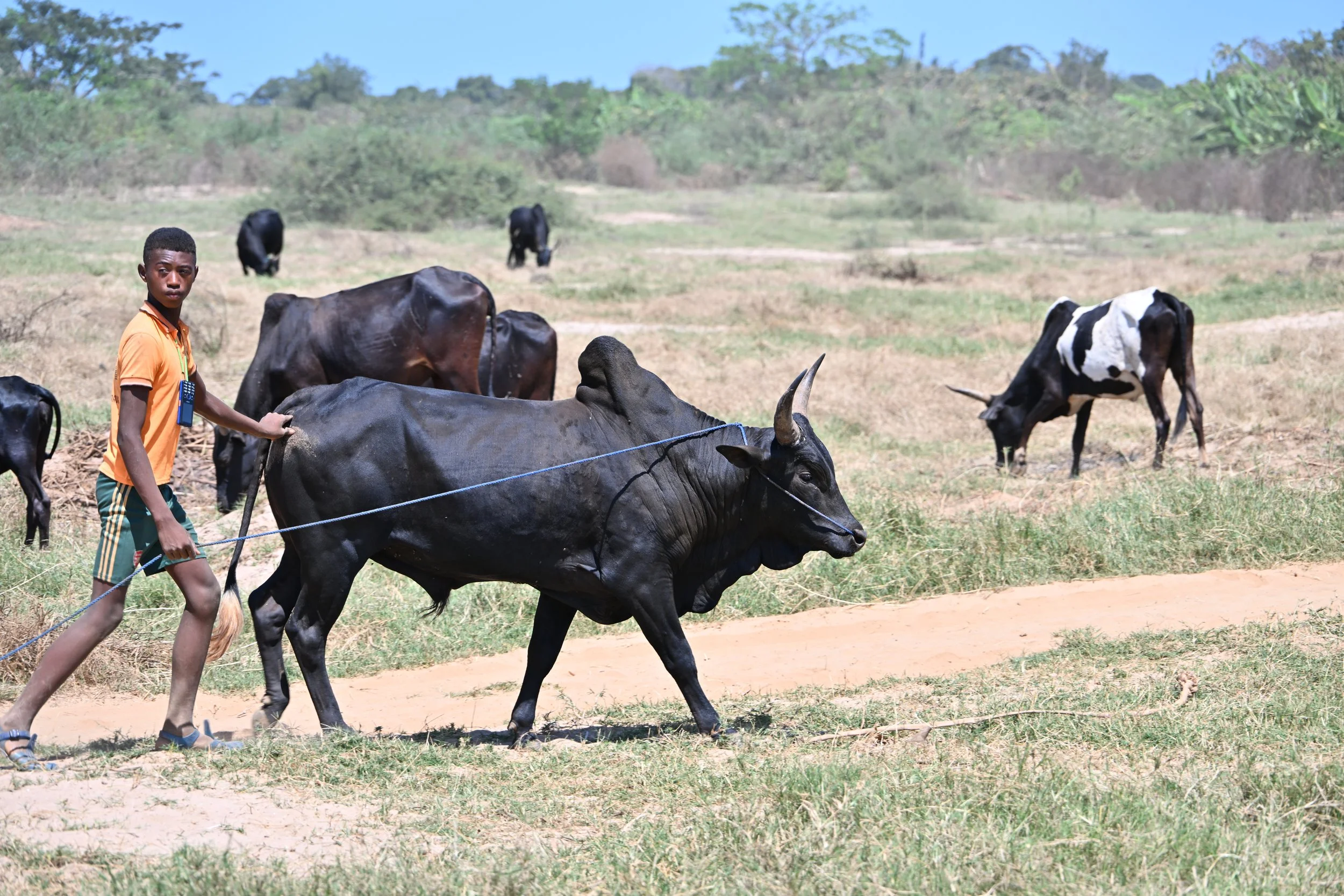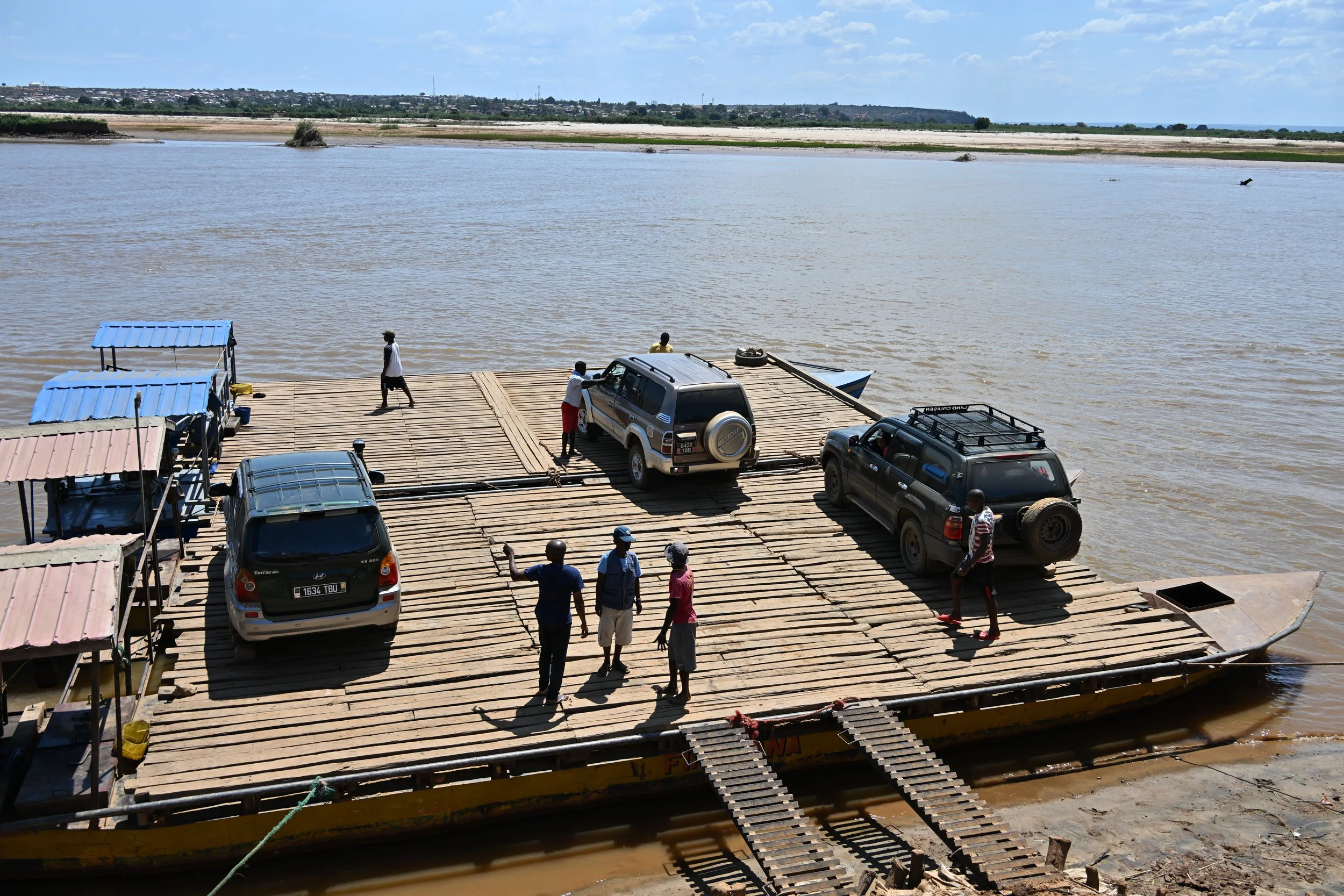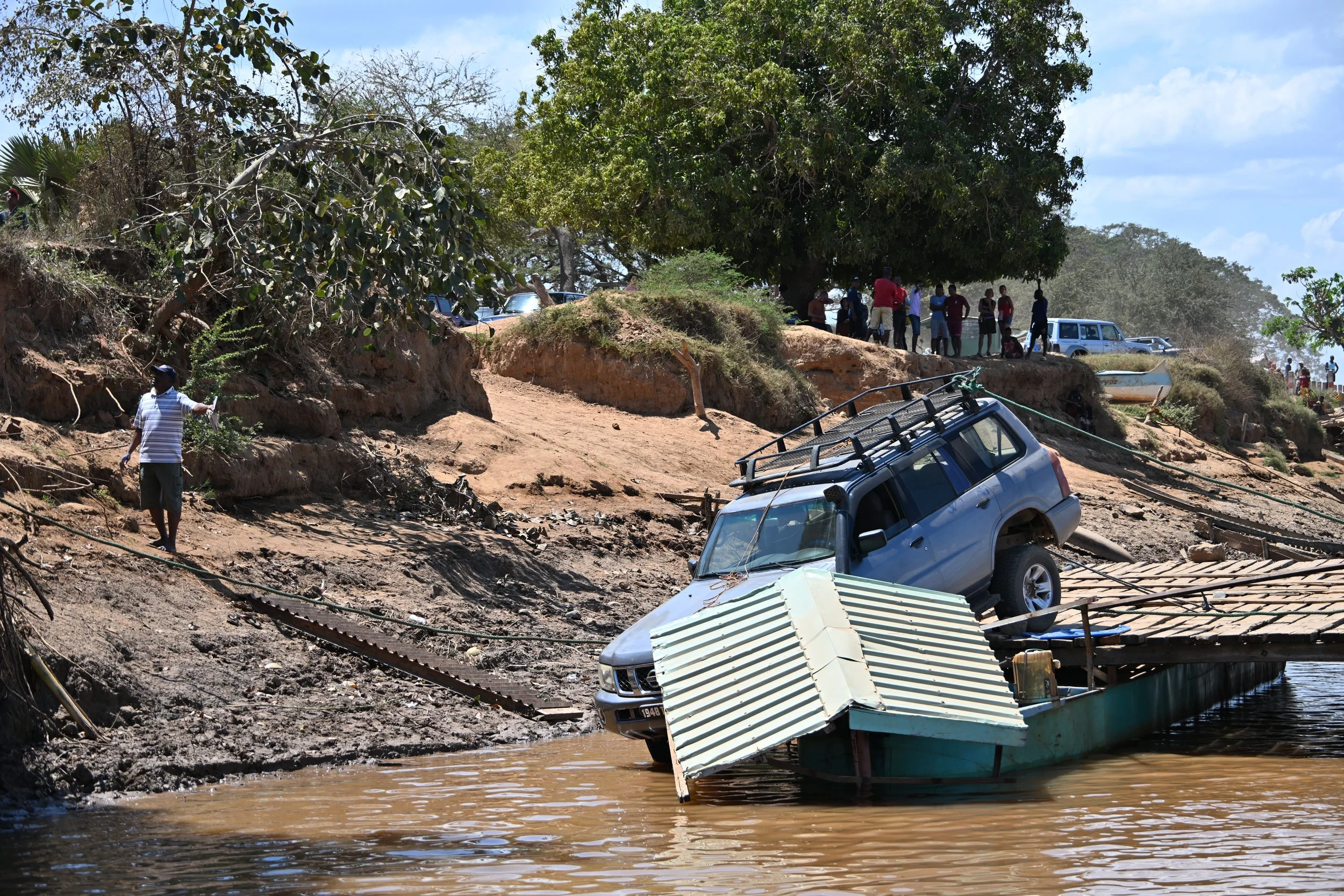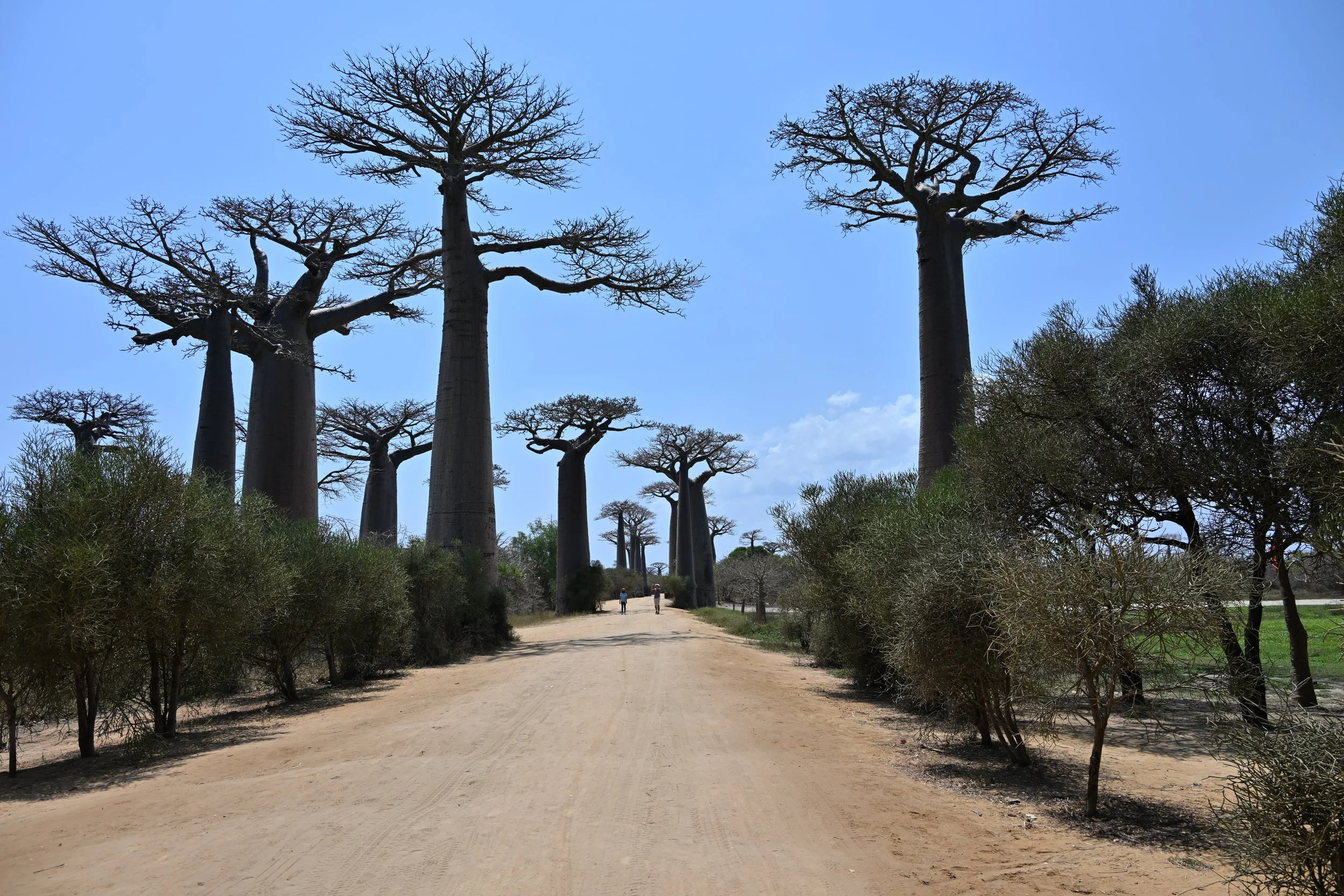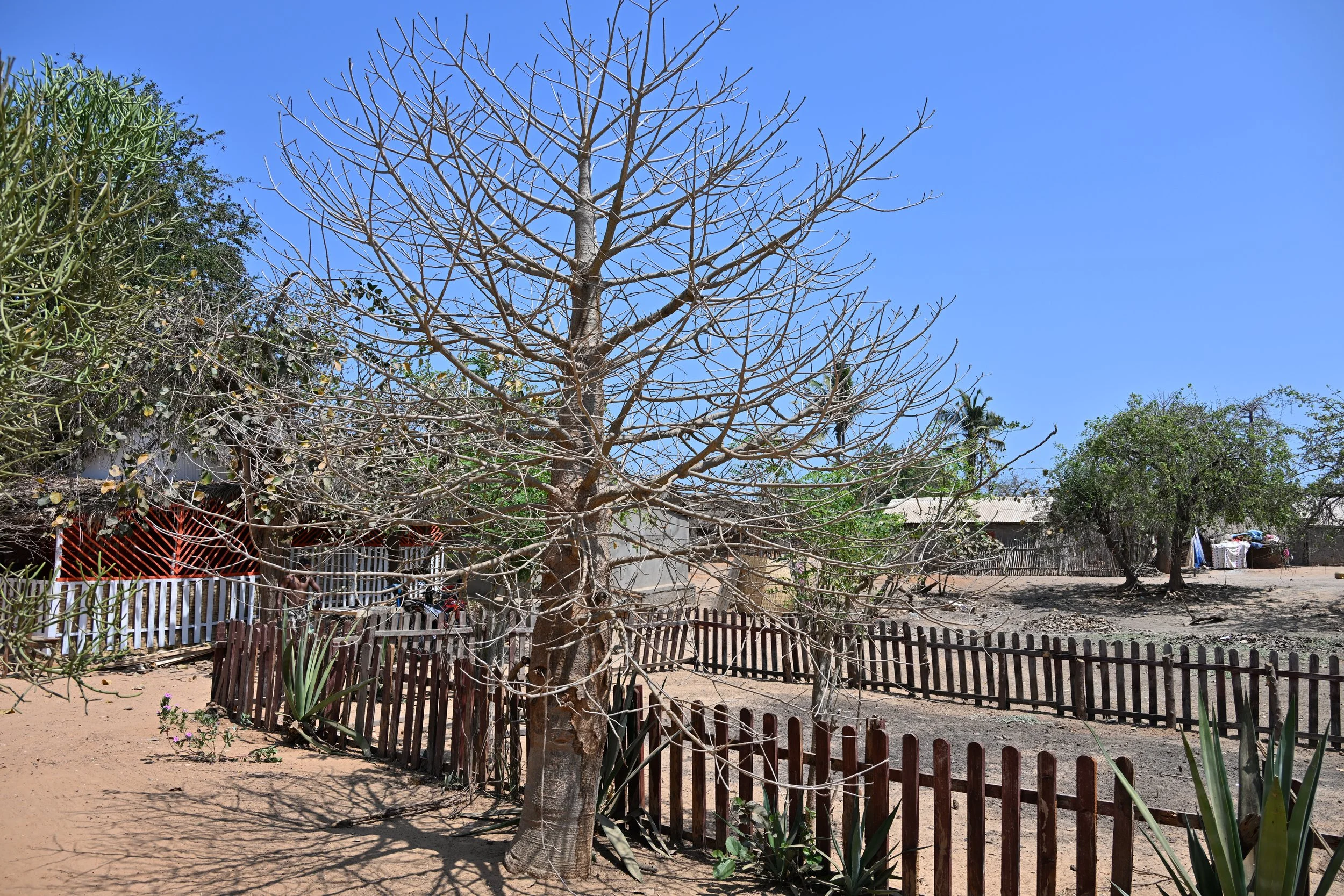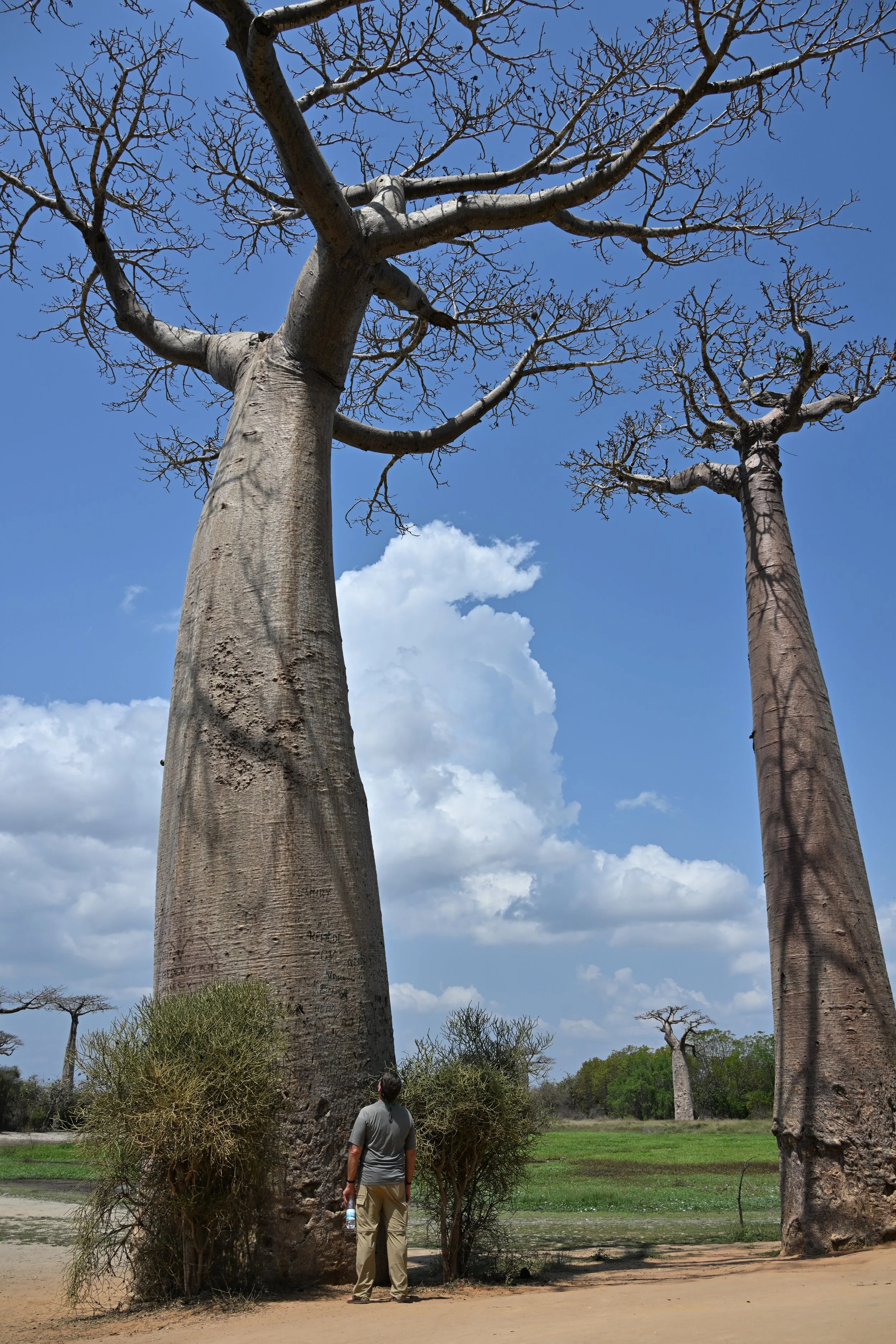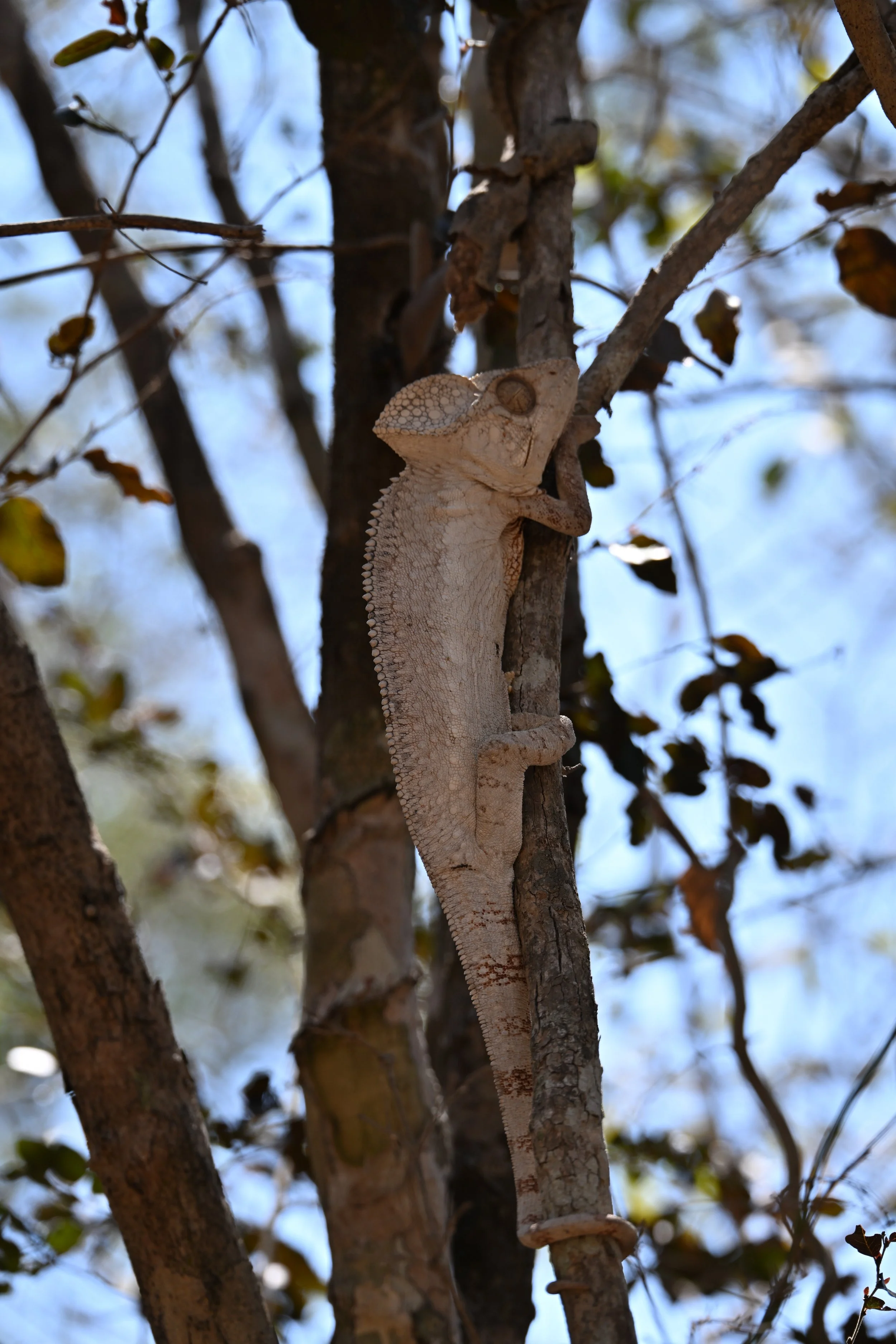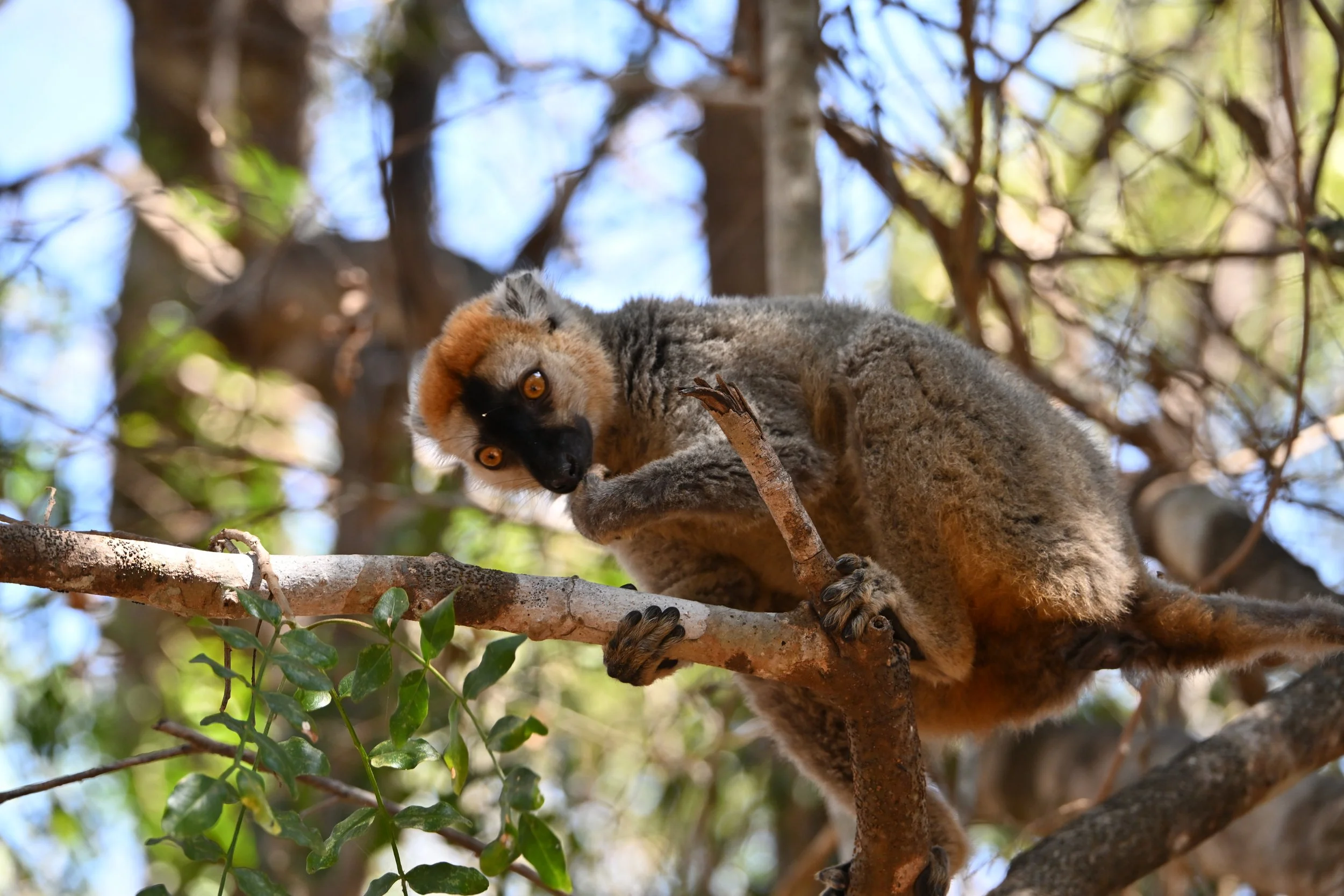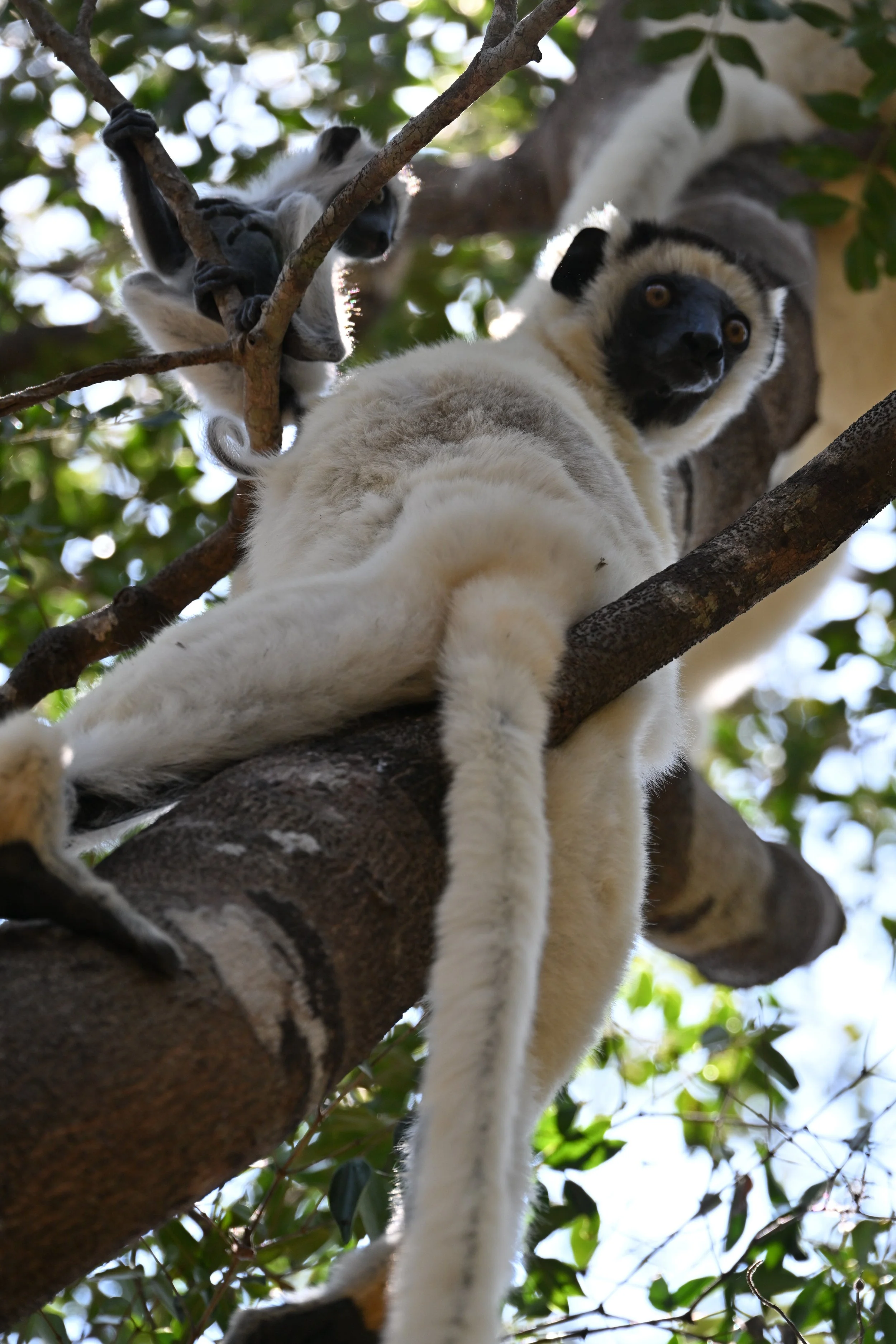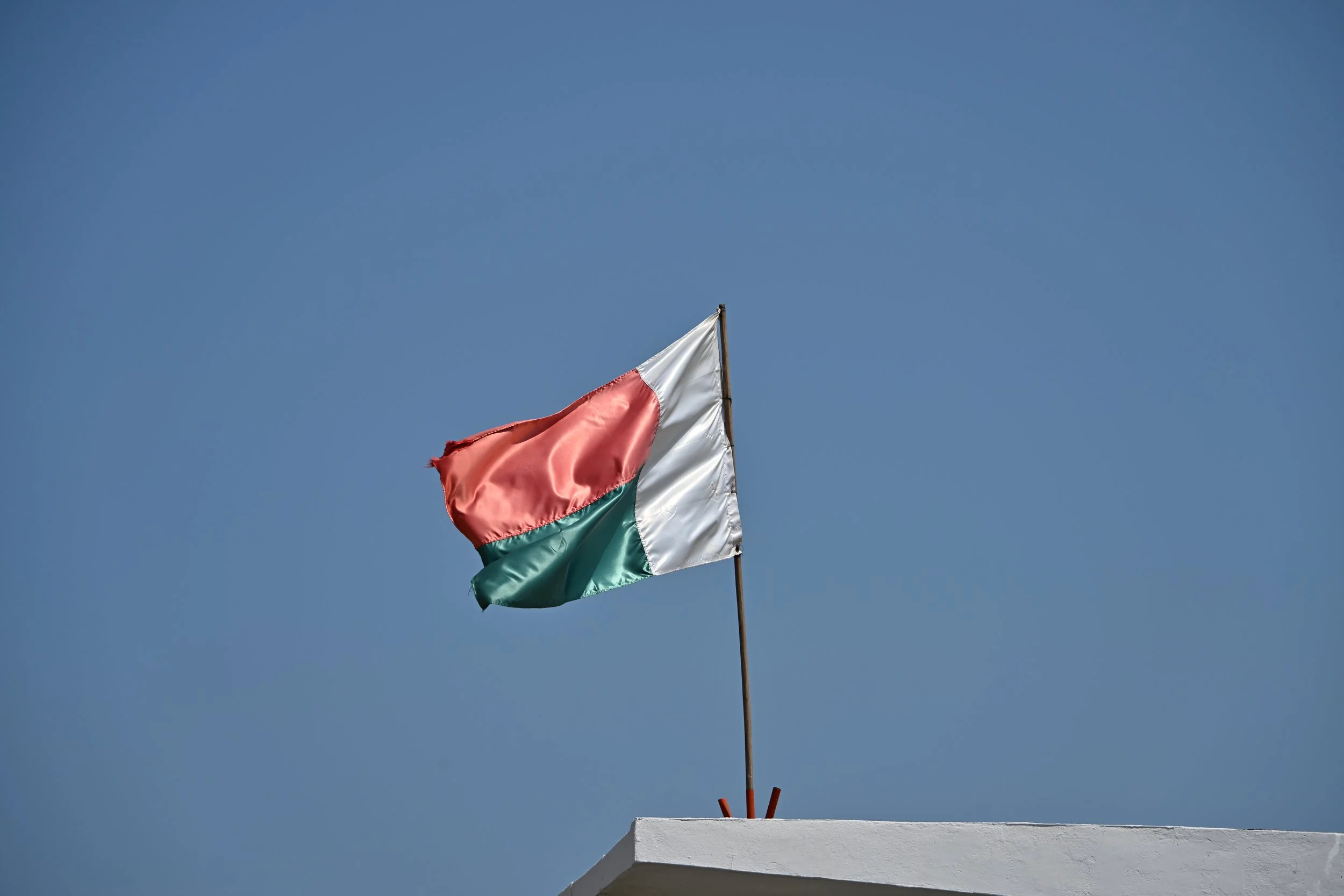Big Tsingy
That’s not a typo. Tsingy is a Malagasy word meaning “the place where one cannot walk barefoot” or “walking on tiptoes”.
That picture was from the top of the hike we did, and those limestone needles and sharp edges are every bit as painful to walk on as you suspect. The full name of the park is Tsingy de Bemaraha National Park and it is located in NW Madagascar, about 2/3 the way up the west side of the island.
To get to that viewpoint above, we first climbed through a dry forest, and found some unique birds. Sorry, you’re just going to have to be patient…
Madagascar Parrot (yes, it’s black)
Malagasy Paradise-Flycatcher
And the neatest to me was a forest Madagascar Pygmy Kingfisher. I thought kingfishers always lived by water -
He’s 5 inches long and weighs less than an ounce. I find his stubby little tail adorable. :)
Before we could climb up to the top, we passed through a cave, walking by tree roots…
… and some beautiful formations on the walls…
… and nearly crawling on all fours, before we reached the ladder and cables section -
Steve enjoys snapping pics of me at work -
Once on top, everywhere we turned we saw “stone forest” interspersed with green trees -
Climbing on down continued to be interesting…
… but the swinging bridge really wasn’t as scary as many others we’ve crossed. ;-)
I really liked the horizontal cuts that made the rocks look like they were floating
Continuing on…
… through the rocks…
… we arrived in the forest again, to find another species of lemur -
Von der Decken’s Sifaka -
(this species doesn’t have the black cap of the other Sifaka we saw)
The next day, we started our two longest days of driving. This first one was “only” 8 hours, on roads like this…
… and this….
… that Steve aptly described as “steeplechase” -
(this was taken from the middle of the shallow but wide stream we were crossing)
There were some water crossings where you couldn’t be sure which was the safest way through, but the sticks were there to guide you (and you paid the guy working in the river, who put them up) -
We made it safely through the steeplechase course to arrive back at the Avenue of the Baobabs in time for sunset…
… and a sundowner of rum punch.
